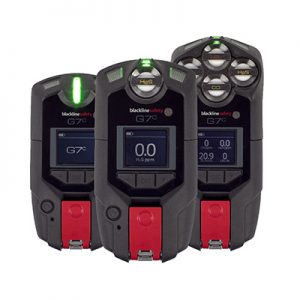
Industrial work is vital. Manufacturing, infrastructure development, transportation, and even agriculture rely on factories, chemicals, equipment, and machinery that industrial workers provide. But industrial work is not without its hazards. Safety equipment, proper procedures, and early detection are vital when it comes to keeping industrial workers protected. An H2S gas detector is a key part of that arsenal. Hydrogen sulfide is common, but it should never be harmful. While it is a risk, it’s also a manageable one.
Hydrogen Sulfide (H2S)
Hydrogen sulfide gas, or H2S, is a colorless gas. It’s perhaps most well-known for giving off the strong odor of rotten eggs. This odor becomes detectable by human beings at around 0.01-1.5 parts-per-million (PPM). Background levels are typically odorless and harmless. While the odor threshold isn’t pleasant, it’s otherwise harmless. At 2-5 PPM, long-term exposure can cause nausea, headaches, the eyes to water, and may contribute to a loss of sleep. In some asthma patients, bronchial restriction is also possible.
The major factors to consider are the level of exposure or dose, duration, and work being done. As you know, more strenuous work causes people to breathe more rapidly and deeply. Respiration certainly plays a role here. With 20 PPM, workers might experience fatigue, a loss of appetite, headache, irritability, impaired memory, or dizziness. Higher levels could result in conjunctivitis, altered breathing, coughing, staggering, or serious damage to the eyes. The greatest levels of exposure could cause loss of consciousness or even death.
Obviously, H2S exposure is something that needs to be avoided and monitored carefully. Factory, petroleum, and natural gas, wastewater, and agricultural workers are all prone to being exposed to hydrogen sulfide. While H2S is part of the job, it doesn’t have to be hazardous. Early detection is key.
Safety and Monitors
An H2S detector is an essential piece of safety equipment. OSHA sets strict limits when it comes to hydrogen sulfide levels. Hydrogen sulfide or H2S gas detectors rely on electrochemical sensors in order to detect and measure parts-per-billion (PPB) and parts-per-million (PPM) levels of H2S gas. These electrochemical sensors use an electrochemical reaction to provide detection. This occurs when H2S gas combines with carefully-selected materials inside the sensor. When this reaction occurs, it creates a small electrical current. This current is then amplified and measured. Industrial-quality detectors are needed to ensure that the H2S levels remain below the limit mandated by OSHA.
These detectors come in a number of different configurations. The most common are portable, fixed, or sensors. Portable detectors such as a two-year BW Clip are easy to carry from one work location or department to the next. BW Clip detects other gases by choosing which gas needs detected when ordering. Another option would be the Next Generation ChemLogic Portable CLPX gas detector. The CLPX is advantageous because of its lower detection range.
Fixed detectors are self-explanatory. They provide continuous monitoring in a specific area or at a single point. H2S and other gases can be detected with fixed gas detectors. Sensors allow for the gas you detect to be changed in a matter of minutes. They’re well-suited to environments where your needs are constantly changing.
Detection
Reliable detection is non-negotiable. After all, consistent industrial gas detection is simply part of doing business. Contact DOD Technologies, Inc., at (815) 680-6086 if you have any questions or would like a recommendation.







